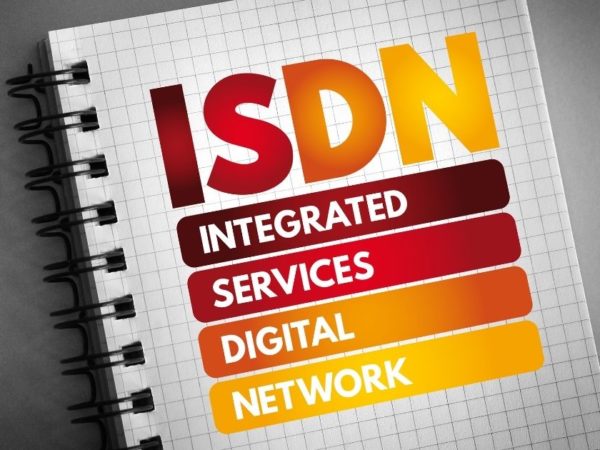Network functions virtualization (NFV) is a modern technology that allows deploying of virtualized network services instead of traditional hardware.
This is quite helpful in network architecture and can help decouple network functions and hardware using virtualization techniques.
Many technologies have surfaced, from cloud computing and OpenFlow to software-defined networking (SDN). Network functions virtualization (NFV) is a new concept that has rightfully claimed its place across industries.
NFV takes forward steps to create a more agile network infrastructure at a lower cost. With this technology, you do not need dedicated hardware for every network function.
Moreover, it enhances scalability by allowing service providers to provide new network applications and services on demand without additional hardware resources.
Let’s understand what NFV is, how it fits in the industries, why it is needed, and more.
What Is Network Functions Virtualization?
<img alt="YouTube video" data-pin-nopin="true" data-src="https://kirelos.com/wp-content/uploads/2023/02/echo/maxresdefault.jpg63ef32152ddc2.jpg" height="720" nopin="nopin" src="data:image/svg xml,” width=”1280″>
Network Functions Virtualization (NFV) is the latest technology that replaces network appliance hardware with effective virtual machines (VMs). And VMs need a hypervisor to run networking processes, such as load balancing and routing.
A group of telecom operators first published a white paper in October 2012 on OpenFlow and software-defined networking (SDN). The Call for Action concluded the white paper and led to the creation of NFV. It aims to extend the published specifications and produce new ones based on the latest enhancements.
The primary mission of network functions virtualization is to use commodity hardware. This is only because network managers are no longer required to purchase or manually configure the dedicated appliances to build service chains.
Each dedicated network appliance must be cabled manually, which consumes more time, electricity, and data center space. Since NFV virtualizes the network functions and eliminates physical appliances, network operators can move, change, or add network functions in a simplified process using the software.
For example, a network operator moves their virtual machine to another physical server or provides another virtual machine on the original server. It runs solely in the software, moves automatically, and can be executed remotely.
This flexibility allows network administrators to respond to the additions and changes and move in a more scalable and nimble manner as the network service demands and business goals change.
Some examples of network functions virtualization are load balancers, intrusion detection devices, firewalls, WAN accelerators, session border controllers, and more. Administrators can deploy any of the above components to deliver network services and protect a network, avoiding the complexity and high cost of installing physical units.
Thus, the network administrator can virtualize standard storage, computing, and network functions to place them on Commercial Off-The-Shelf (COTS) hardware, including x86 servers. The available x86 server resources in the virtual machines keep the network services flexible and independent of traditional hardware.
This way, NFV allows multiple virtual network functions (VNFs) to run on one server and scale up or down. It also virtualizes the data and control plane both within the data center and outside networks.
How Does Network Functions Virtualization Work?
NFV essentially replaces the functionality of individual hardware networking components. This means virtual machines run software that shows similar networking functions as traditional hardware. From load balancing to firewall security, all are performed by software rather than any hardware components.
A software-defined networking or hypervisor controller lets engineers program different segments of a virtual network and automate the network provisioning. IT managers configure different aspects of network functionality within minutes.
To understand the working more, let’s explore NFV’s architecture.
Architecture of Network Functions Virtualization
In a traditional architecture, each proprietary hardware devices carry out multiple networking tasks. A virtualized network eliminates hard tasks and replaces the pieces used in traditional network architecture with software applications that run of VMs to carry out networking tasks.
Flexible and open architecture is an essential feature of network functions virtualization. This gives users access to multiple deployment choices.
A typical NFV architectural framework has three major components:
- Virtual Network Functions (VNFs)
- Network Functions Virtualization Infrastructure (NFVI)
- Network Functions Virtualization Management and Network Orchestration (NVF MANO)
Let’s discuss the components in detail:
Virtual Network Functions (VNFs)
VNFs are the building blocks of network function virtualization architecture. It is a virtualized network component like a firewall, DHCP server, network sub-function, base station, or virtual router.
For instance, many sub-station, such as home subscriber servers (HSS), serving gateway (SGW), and mobility management entity (MME), serve as independent virtual network functions. Also, it functions as a virtual evolved packet core (EPC).
A single VNF is deployable on a single virtual machine or across different virtual machines. Every VM in your organization can host a VNF function or a subset of overall functions in the list.
VNF has a subsection, i.e., an element management system (EMS). EMS supports functional VNF management, including fault, performance, accounting, security management, and configuration. In addition, EMS uses proprietary interfaces to run a single or multiple VNFs simultaneously.
Network Functions Virtualization Infrastructure (NFVI)
NFVI encompasses software and hardware elements used to generate the framework for VNF deployment. Users can access NFVI to control, manage, and execute VNFs.
An NFVI setup physically exists around several locations with the network that provides connectivity to generate a comprehensive framework. Further, NFVI includes virtual resources, a virtualization layer, and a hardware layer.
The hardware layer includes IT infrastructure, including computing, storage, and network elements. These elements offer VNFs with connectivity, storage, and processing functionality using the hypervisor.
Computing and storage resources exist in the resource pool where network resources comprise switching functions – wired and wireless networks and routers.
The virtualization layer allows the hypervisor to function synonymously by condensing hardware resources and decoupling the virtual network functions software from its primary hardware. This layer enables the VNF lifecycle to be hardware independent.
The main function of the virtualization layer includes logical partitioning and abstraction of physical resources. This layer is also responsible for ensuring the software-based implementation of virtual network function to allow access to the virtualization infrastructure.
Additionally, the virtualization layer offers virtualized resources that allow VNF execution. Furthermore, it lets hardware resources and VNFs be independent, and software deployment becomes possible on various distributed physical resources.
Thus, virtual resources are generated when the virtualization layer finishes the final abstraction of the computing, network, and storage functions from the hardware layer and makes them for use and allocation.
NVF Management and Network Orchestration (MANO)
NVF MANO is the layer for managing and orchestrating different roles within the NFV architecture. The primary function of this layer is to manage end-to-end resource management, such as storage, networking, VM resources, and computing in virtualized data centers.
The main goal is to allow flexible onboarding. This helps manage the uncertainty associated with the quick spin-up of the network elements. The framework was developed by the working group of NVF MANO associated with the European Telecommunications Standards Institute (ETSI) Industry Specification Group for NFV.
With time, this framework is known as NFV management and orchestration. It is classified into the following functional blocks:
- The NFV orchestrator directs the onboarding of new network services and VNF packages, authorizing and validating NFVI requests for resources, managing the NS lifecycle, and managing global resources.
- The VNF manager allows lifecycle management of VNF instances. This block is responsible for the coordination and adaption role of event configuration and reporting between element management systems and NFVI.
- The virtualized infrastructure manager controls and manages the NFVI network, compute, and storage resources.
The effective operation of this architecture relies on the integration of open APIs. The MANO component operates with standard templates of VNF that allow you to choose from NFVI resources to deploy a platform or element.
An operator’s decoupled business support system (BSS) or operation support subsystem (OSS) layer can be integrated with this component using standard interfaces. OSS manages faults, services, configurations, and networks. In contrast, BSS directs the management of products, orders, customers, and more.
Why Do You Need Network Functions Virtualization?
In traditional networking, deploying network components takes months of time. But with network functions virtualization, it will take only hours.
Network function virtualization can scale and adjust available resources to the applications and services. This shortens the time needed for new or updated products to go to the market and helps save money.
In addition, it allows the separation of communication services from the dedicated hardware, including firewalls and routers. This separation enables companies to provide new services without installing new hardware.
Let’s discuss why you need NFV and what makes it a powerful technology.
#1. Greater Efficiency
NFV in any virtualized infrastructure ensures increased workload capacity with minimal power consumption, lower cooling requirements, and smaller data center footprints. With fewer servers, you can do multiple works since a single server can run various virtual network functions at once.
When network demand fluctuates, the software updates organizational infrastructure. NVF allows different functions to run on one server, reducing costs, consolidating resources, and eliminating the need for proprietary physical hardware.
#2. Flexibility
NFV shortens the time-to-market gap by allowing quick changes to the infrastructure to support new organizational products and goals.
The network rapidly adjusts to fluctuations in demand and traffic. It scales the resources and lets VNFs automatically go up and down using SDN software.
#3. Reduced Vendor Lock-In
Proprietary hardware systems are expensive to deploy and configure. It can also become obsolete easily. But your customers would still be dependent on you unless they go through expensive switching. This results in vendor lock-ins.
NFV uses standard hardware instead of dedicated hardware to run network functions. So, multiple VNFs in the server help avoid vendor lock-ins.
#4. Scalability
The ability to scale up or down based on the demand can benefit you in the long term in running a successful business. In simple terms, scaling the architecture with VMs is easier and faster; and hence, doesn’t require any additional hardware.
#5. Support for Automation
Network functions virtualization can be managed or configured programmatically like software. This enables your organization to leverage automation to change configurations rapidly or carry out updates at scale.
#6. Faster Deployment
Since network functions virtualization is implemented like software, the systems can easily be updated and rapidly rolled out. This way, NFVs take lesser time to deploy the services.
#7. Security
Due to security concerns in the network, companies want to take greater control of their network management. NFV secures these networks by implementing virtualized security gateways for the server ecosystem.
Furthermore, NFV secures enterprise networks using virtualized solutions, including encryption, access controls, intrusion detection, anti-malware, and more, making network security more agile and cost-effective.
Challenges of Network Function Virtualization
NFV offers many benefits but also comes with some challenges. Some of those are:
- Although large-scale network functions virtualization deployments are economical, but the major challenge comes with reliability.
- When you need process realignment in your enterprise that upgrades previous networks using NFV, managing virtual and traditional infrastructure simultaneously can be difficult.
- Wireless carriers have serious requirements for better network performance that are generally contractual in the form of SLAs. To support this, NFV needs to monitor VNFs for every customer and adapt to the compute resources and network dynamically.
- Individual component failure during the NFV deployment can result in failures in both hardware and software, impacting resiliency.
- In the NFV model, it is difficult to contain and isolate malware. It is easy for malware to travel among the components and damage them.
Applications of Network Functions Virtualization
Let’s discuss some of the use cases where NFV is applied:
- Service chaining: Communication Service Providers (CSP) chain and link the services and applications together, such as SD-WAN network optimization and firewall, and offer an on-demand service delivery.
- Software-defined branch: SD-WAN network optimization functionality can be done by NFVs. It enables fully virtualized functions and is offered as a service.
- Network monitoring and security: A firewall can be designed using NFV. Through this, you can monitor fully virtualized network flows. Also, this allows the application of security policies for network traffic routed using the firewall.
NFV is applicable across many areas of network functions, such as mobile networks. Some common applications are:
- Content delivery networks
- Evolved packet core
- Session border control
- Virtual customer premises equipment
- Security functions
- Web application firewalls
- Network slicing
- Load balancers
- IP multimedia subsystem
- Network monitoring
Learning Resources
Below are some books that will help you learn about this technology more.
#1. Network Virtualization (1st Edition)
This book is written by Kumar Reddy and Vector Moreno. It tells about the secure network services for diverse user communities.
Apart from this, it also shares the following:
- The present network virtualization technology for business drivers so that they can face major challenges.
- The use of virtualization designs and existing applications, including VoIP and network services, and quality of service.
- The design alternatives of various real-world deployment realities with configuration case studies and examples.
#2. Network Function Virtualization: Concepts and Applicability in 5G Networks
This book is written by Ying Zhang. The book shows the horizontal view of the newly emerging technologies in the field of NFV, introducing open-source implementation efforts that can bring NFV from prototype to reality.
The book explores the latest technique of NFV through the architecture, challenges, and use cases, as well as open source and standardization implementations. It is the first source of information about the cloud technologies used in the recent 5G networks.
#3. Network Function Virtualization
Authors Ken Gray and Thomas D. Nadeau provide a vendor-neutral level and architectural overview of the problems surrounding the large data transmission and storage requirements.
This book tells the importance of these problems and how we need solutions for today’s growing companies. It also teaches the benefits of having NFV technology in your enterprise.
#4. Network Functions Virtualization (NFV) with a Touch of SDN
The book is written by Rajendra Chayapathi, Syed Hassan, and Paresh Shah. They explain the essentiality of NFV across industries that can reduce costs while accelerating service delivery.
It also tells that by using the technologies of NFV and SDN together, network owners could benefit from new functions to improve scalability, leverage microservices, and more.
Final Words
Network functions virtualization promotes customization and scalability with VMs by minimizing the dependencies of traditional network infrastructure. It has the potential to enhance business revenue inflow without any proportional increase in investment.
Thus, NFV is a promising trend in the field of virtualization. Organizations have begun using NFV and are free to deploy their applications or move their virtual resources around with reduced cost and increased efficiency.
Next, check out the best virtualization monitoring tools for medium to big businesses.
![Kirelos Blog Network Functions Virtualization Explained [+4 Learning Resources] Network Functions Virtualization Explained [+4 Learning Resources] Networking](https://kirelos.com/wp-content/uploads/2023/02/23816/network-functions-virtualization-explained-4-learning-resources-950x358.png)


